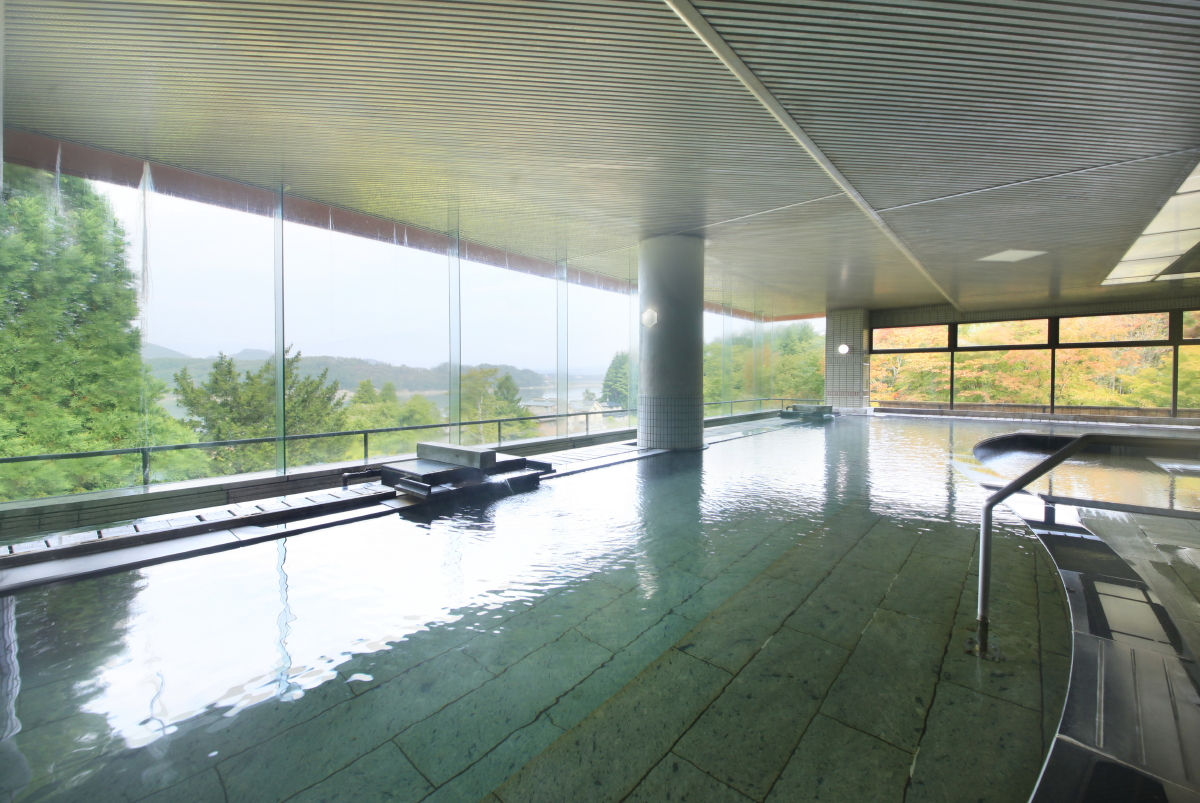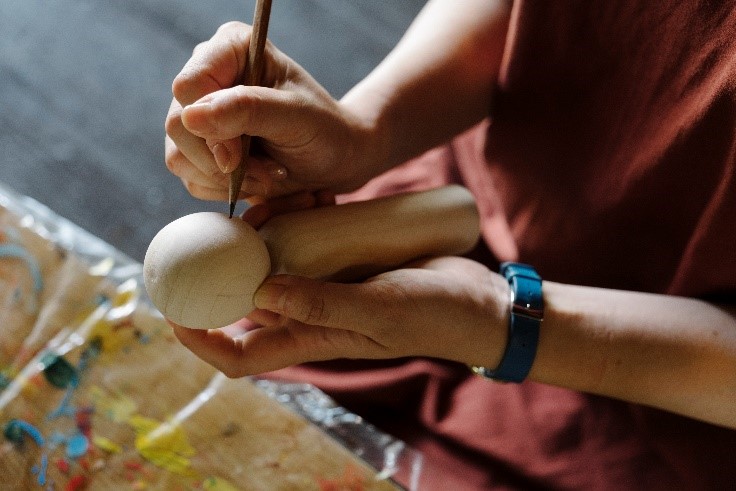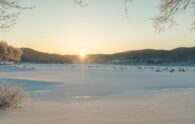When you ask Japanese people where they’d like to go during the winter, most will respond with hot springs.
We in Iwate probably think so even more strongly than other regions, just because winter here is so cold – after a hard day shoveling snow, we just want to warm our bodies and souls with a nice soak in a hot spring.

One of the most famous hot springs within Iwate Prefecture is Tsunagi Hot Springs, located within Morioka City.
Tsunagi Hot Springs has a long history, with its origins from around the end of the Heian period (around the years of 1058 to 1065). The warrior Minamoto no Yoshiie set up his headquarters here during the Zenkunen War, and noticed a hot springs bubbling up. His beloved horse was healed when he applied the water to its wounds, and he used a rope to tether his horse to a rock with a hole in it in order to bathe in the spring. That’s how Tsunagi got its name – “Tsunagi” means to tether, or connect two things together in Japanese.
The water from the source of the hot springs is quite hot, so you can still bathe outdoors in a classic Japanese rotenburo bath even during Iwate’s chilly winters. The sulfur content of the water is said to promote better circulation and metabolism, and the alkaline nature of the water makes skin silky soft, making this hot springs very popular with both young and old, men and women alike.
There are nine hotel facilities in the hot springs region, so there’s plenty of variety in bathing facilities and dining menus to compare. There are ski resorts nearby to enjoy winter sports, and of course it’s fantastic to relax in the hot springs to ease your aching muscles afterwards. Koiwai Farm, located in neighboring Shizukuishi Town, has a winter festival, so one could stay at the hot springs afterwards as well.

Right by the hot springs is the large Gosho Lake. This lake is a precious resource, created from damming the Shizukuishi River and harnessing its flow for the generation of electricity. There is a park on the river banks for children to play sports as well (open from April to November).
The area is known for its beautiful sunrises and sunsets reflecting off of the lake, and when the skies are clear, it’s a fantastic place to see Mount Iwate, also known as the Fuji of the North.
The Morioka Handicrafts Village is located nearby, where you can learn about Morioka’s traditional crafts and handmade goods (Address: Morioka City, Tsunagi, Aza Oirino 64-102). There are a number of activities you can try here, from making Morioka’s famed reimen noodles, indigo-dyeing, weaving bamboo, and more. You can also purchase these goods as souvenirs, as well as view an old dwelling that was built in the Edo Period, complete with a space for housing horses. Don’t forget to stop by this wonderful place to experience Morioka’s history and culture.

Japanese
【冬といったら温泉】日本人にとって、冬に行きたい場所と言えばたくさんの人が「温泉」と答えます。
特に岩手の冬はとても寒く体を温めたい、雪かきで疲れた体を癒したいという思いからより強く思ってしまうのかもしれません。
岩手県内には多くの名湯と言われる温泉地がありますが、その中の一つに盛岡市内にある「つなぎ温泉」があります。
つなぎ温泉は、平安末期の1058~1065年頃に源義家が前九年の役で本陣を構えた際に、沸いている温泉で愛馬の傷が快癒したことから、この愛馬を穴の開いた石に“繋いで”入浴しその名がついたと言われる、とても歴史のある温泉です。
つなぎ温泉の源泉は温度の高いお湯が湧出するため、岩手の寒い冬であっても露天風呂を十分に楽しめます。また、血行や代謝を促進するといわれている硫黄成分とお肌をツルツル効果が期待できるアルカリ性のお湯で老若男女に人気の温泉です。
地域内には、9つの宿がありそれぞれの宿のお風呂や食事を比べてみるのもおすすめです。近隣には、スキー場もありウィンタースポーツを楽しんだ後に、疲れを癒す場所としても最高です。雫石町にある小岩井農場の冬フェスタを楽しんだ後につなぎ温泉に泊まる
なんて行程も可能です。
温泉地の目の前には雄大な御所湖が広がっています。この湖は、雫石川をせきとめて作ったダム湖で放流時に発電が行われる貴重な資源である他、湖畔の公園には子ども向けのアスレチックなどが整備されています(営業期間は4月から11月まで)。
また、朝夕の太陽の光が水面に反射する光景は絶景で、天気が良ければ背後には南部富士と言われる岩手山も一緒に見ることができる最高のロケーションです。
近隣には、盛岡市伝統の工芸品や特産品作りを自ら体験できる盛岡手づくり村(盛岡市繋字尾入野64-102)があります。ここでは、盛岡名物の冷麺づくりや藍染、竹細工などの教室で実際にモノづくり体験をすることができます。さらに、体験だけでなく盛岡市内の特産品をお土産として購入することができるほか、江戸時代に建てられたといわれている馬産地であったこの地域特有の住居の見学など、盛岡の歴史・文化を感じることができる、絶対に寄るべき場所です。



